
Saint Sebastian Messina demonstrates on the background of a low horizon the figure of a martyr, as if towering above reality. Deep perspective hides behind the beautiful Greek beauty with the body of a young man at home, seemingly small and insignificant. Sebastian doesn’t feel pain.
Next to the figure of Sebastian, the buildings appear small, from this environment he wants to run, and the sooner the better. So, in any case, the legend says. The beauty of this body resembles the Greek statues of youths, although it is subordinated to the soft arc-shaped Gothic movement, while in ancient statues every movement has a counterweight, in this case the head and body would have to turn back towards the carrying leg.
The square under the blue sky, covered with sparse clouds, is flooded with light. Even the shady areas are not truly dark. The sun shines from the top left, and the shadows highlight the overestimation of perspective. A certain detachment, an afternoon silence fills the picture. Some details seem to be quite mysterious: on the left, behind Sebastian, depicted extremely squeezed, lies the shepherd, with his head on the curb.
The border stretches across the whole picture, but its contours remain unclear. The foreground ends with them and the middle and the far begins, even more ghostly than the square on which the saint stands. And if you mentally move this border further to the pilaster wall, then he would close everything depicted in the depths of the picture. The fallen column on the right can be interpreted as a symbol of the collapse of the ancient pagan world. In a similar interpretation, she is found in Poussin’s The Adoration of the Magi.
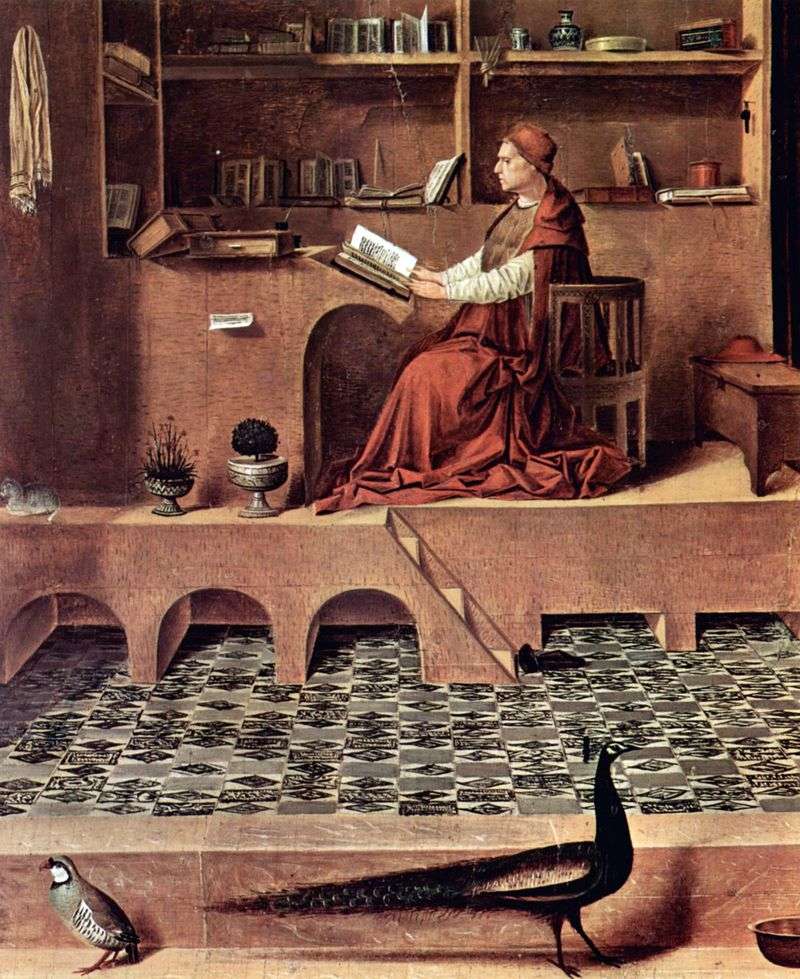 Saint Jerome in the Cell by Antonello da Messina
Saint Jerome in the Cell by Antonello da Messina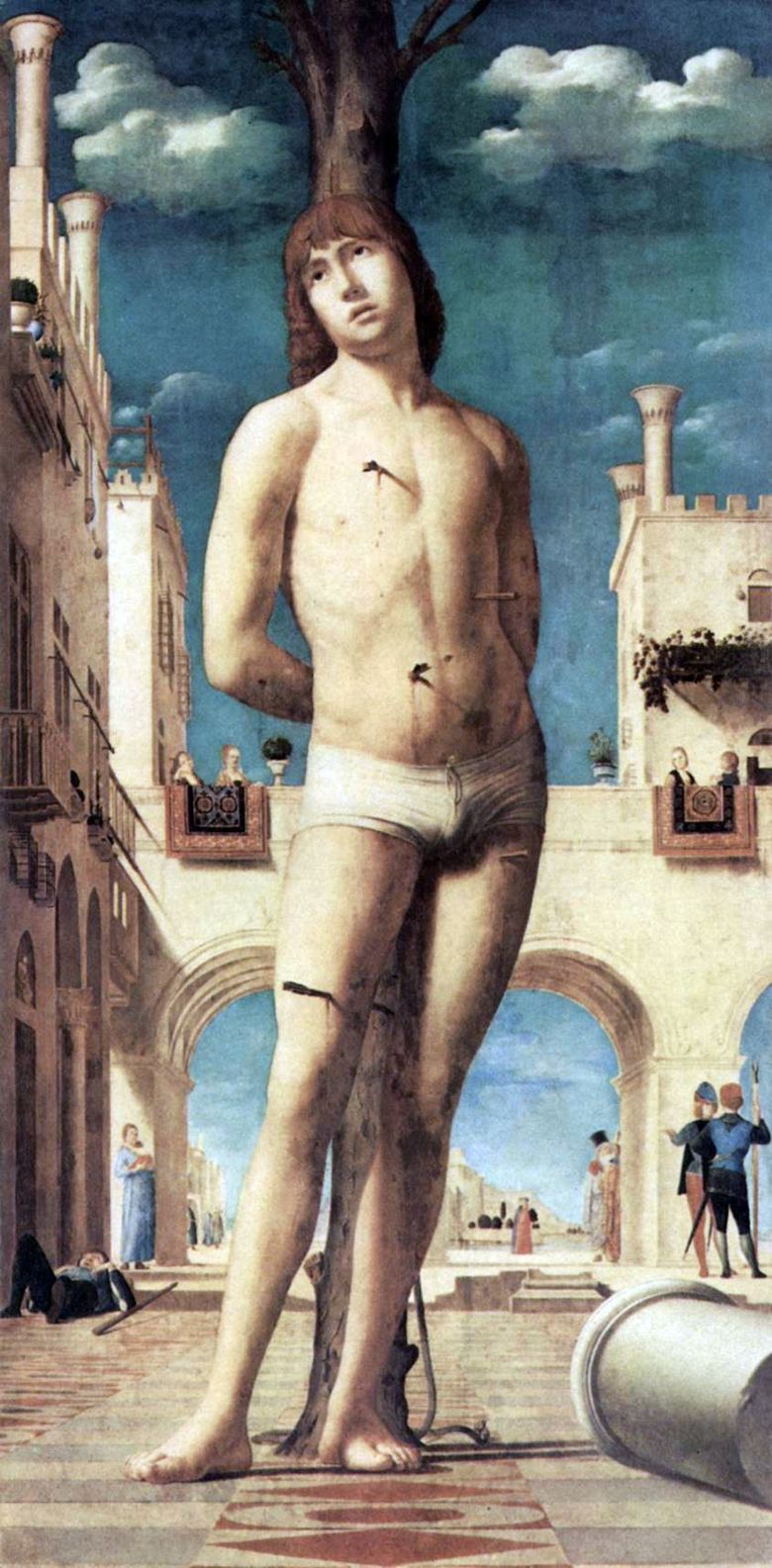 Saint Sébastien – Antonello da Messina
Saint Sébastien – Antonello da Messina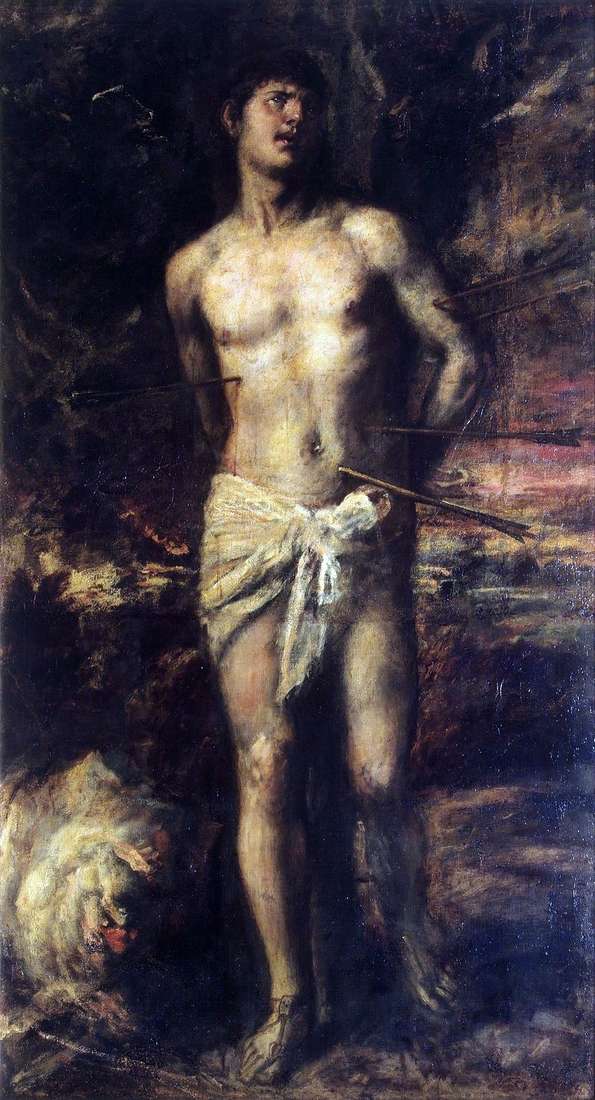 Saint Sebastian by Titian Vecellio
Saint Sebastian by Titian Vecellio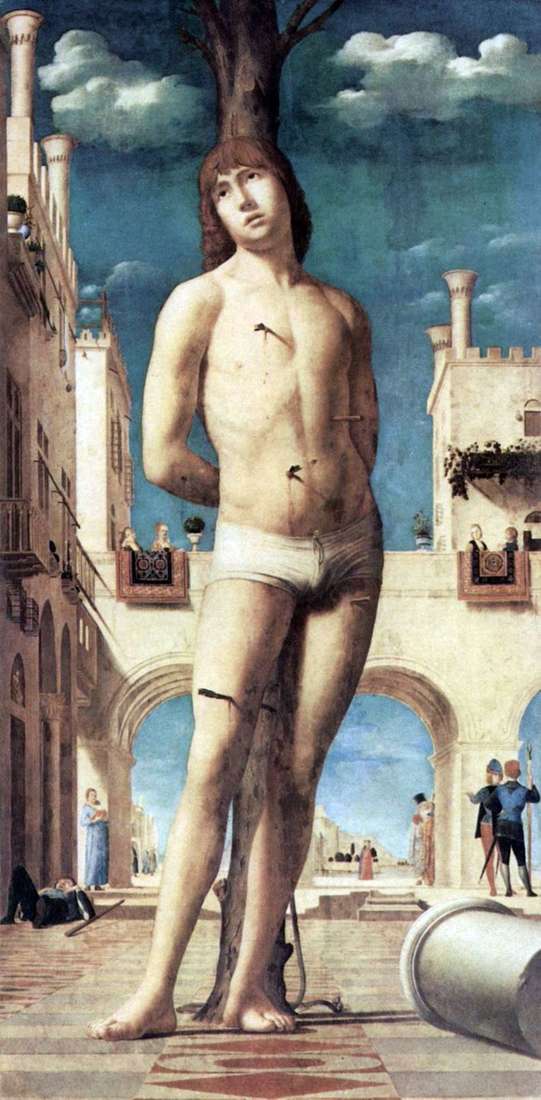 San Sebastián – Antonello da Messina
San Sebastián – Antonello da Messina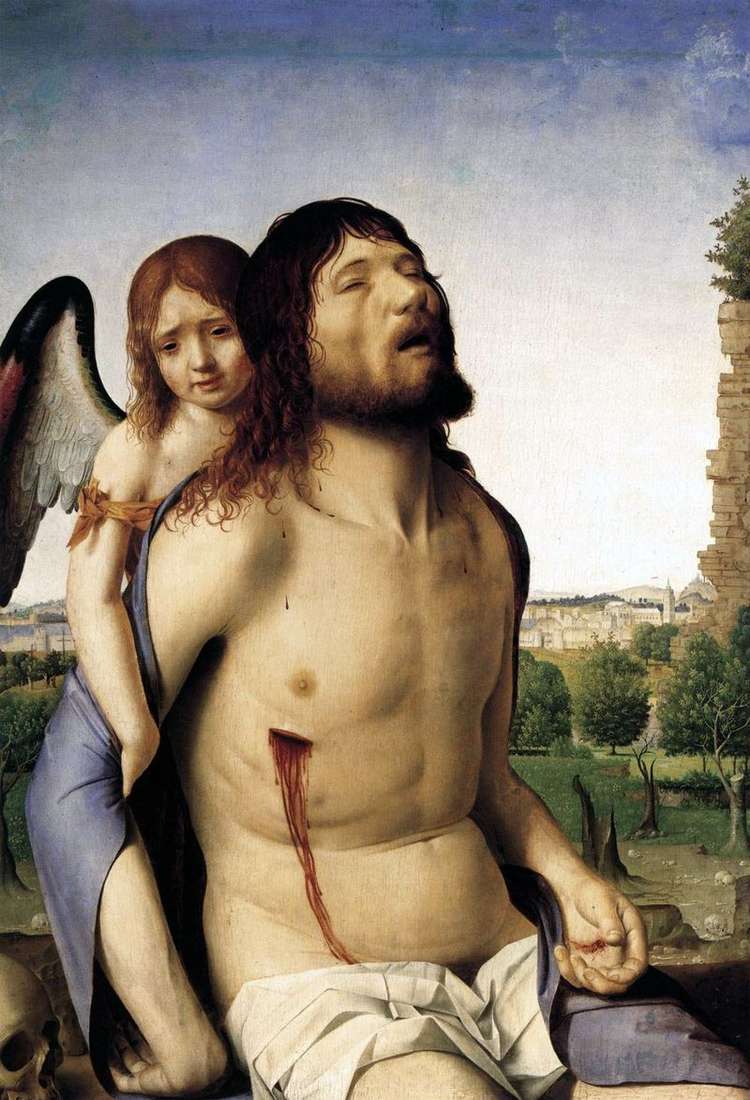 Dead Christ Supported by an Angel by Antonello da Messina
Dead Christ Supported by an Angel by Antonello da Messina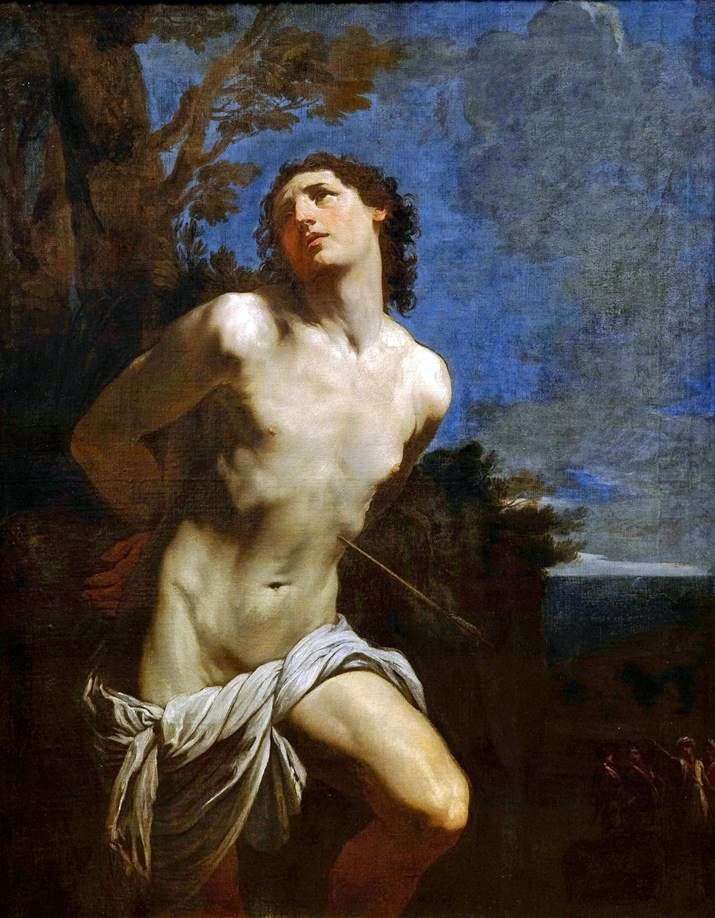 Saint Sebastian by Guido Reni
Saint Sebastian by Guido Reni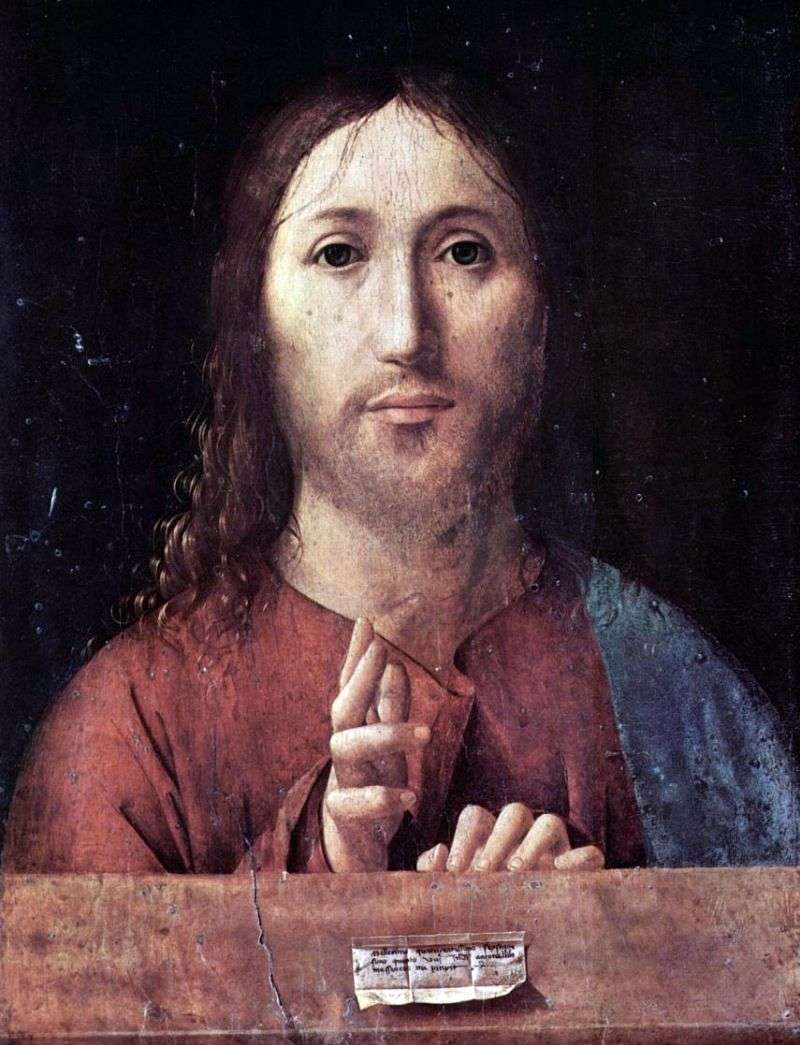 Blessing Christ by Antonello da Messina
Blessing Christ by Antonello da Messina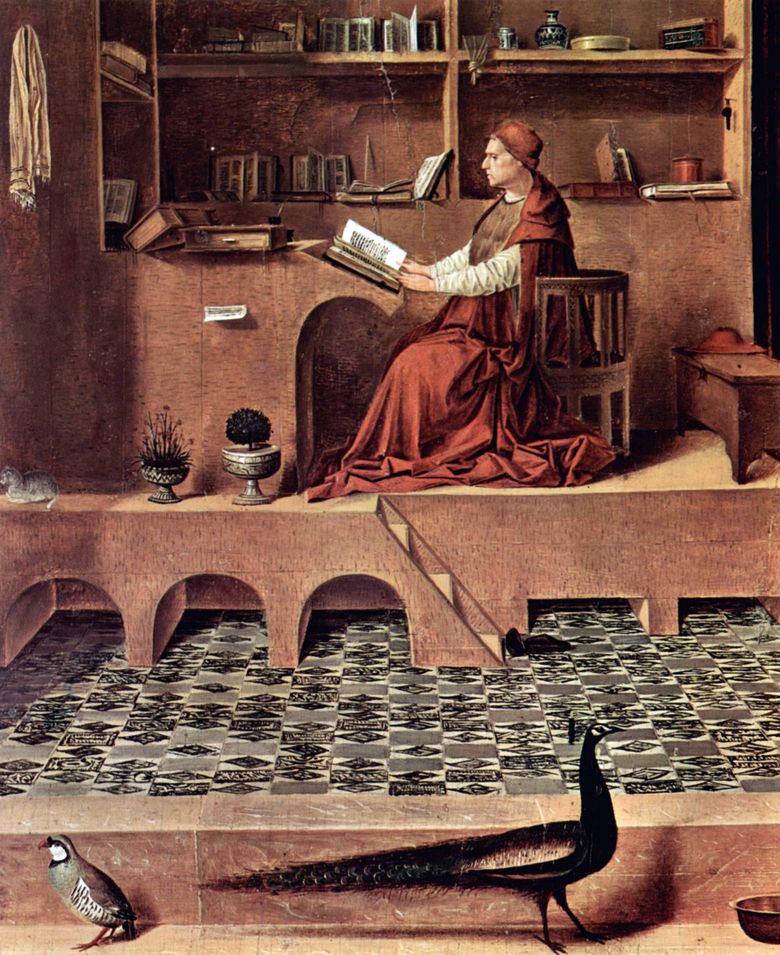 Saint Jérôme dans la cellule – Antonello da Messina
Saint Jérôme dans la cellule – Antonello da Messina